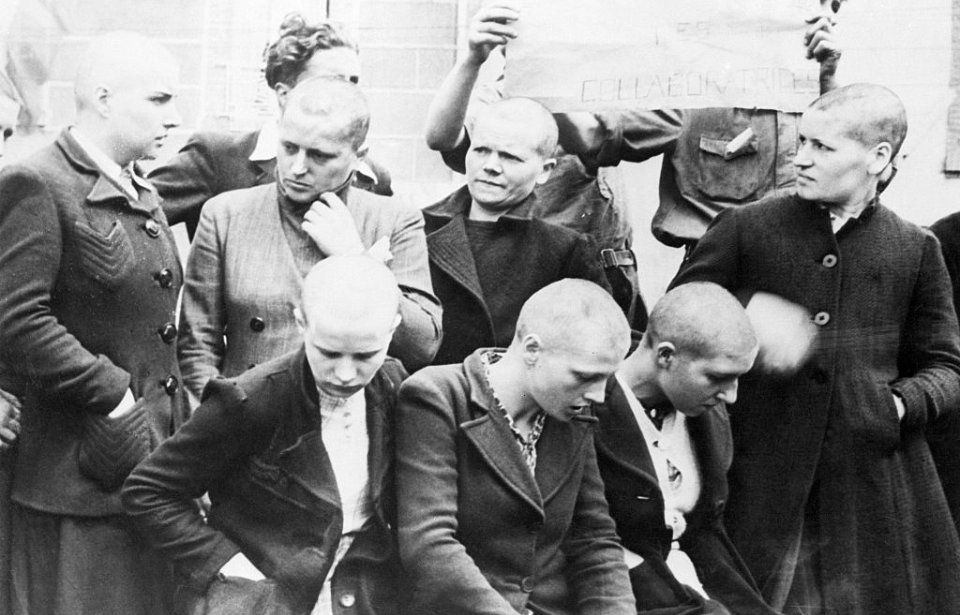When France was liberated in 1944, foreign press agencies were there to document the aftermath. Among the photos taken were of thousands of French women having their heads shaved. Without context, these images appear bizarre, as the majority of those subjected to the experience look on pensively while watched by a crowd of spectators. However, what they depict is a punishment for women accused of horizontal collaboration – collaborating with the German occupiers.
There were many ways to collaborate with the enemy, such as providing them with supplies, fighting alongside them or, under the right circumstances, becoming a double agent. The women in the aforementioned images were collaborators of a different kind, as they had relationships with German soldiers throughout France’s occupation.
German Occupation of France
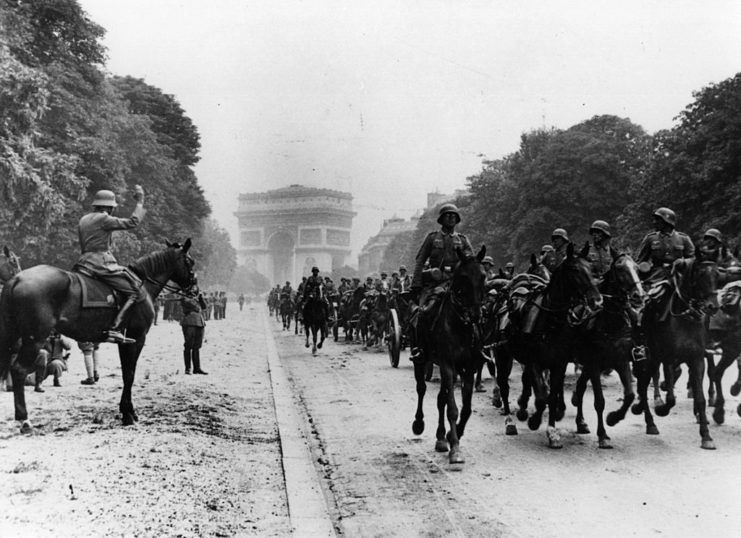
France was invaded by German forces in May 1940 and defeated within a month, forcing an armistice between delegates from both countries. This marked France’s official surrender, and divided the nation into two zones: the German-occupied north and the French-controlled south, which was known as Vichy France.
Marshal Henri-Philippe Pétain was the authoritarian figurehead for Vichy France, where he acted in line with Germany, leading to tens of thousands of Jewish citizens being expelled from the region during this time. Some sources claim he’d hoped to act as a mediator between France and the Axis powers, to both keep German troops out of Vichy and to aid the French Resistance.
It wasn’t until November 1942 that German troops took Vichy, in retaliation for the involvement of Free French forces in North Africa. According to Germany, the acts committed by the French forces in the region had violated the armistice agreement that had been signed over two years prior.
Horizontal collaboration
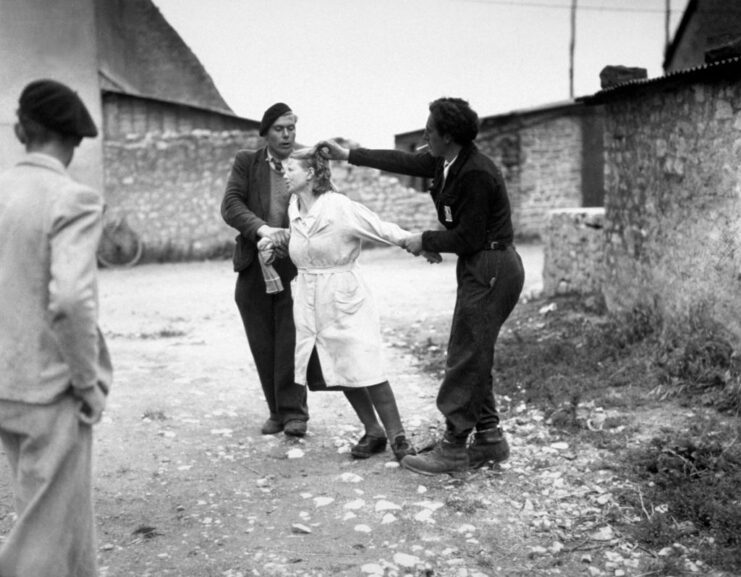
During the German occupation of France, there were many women who began relationships with enemy soldiers. Many of those who wound up with Germans were young mothers whose French husbands were in prisoner of war (POW) camps. The only way they could support themselves and their children was to enter into these relationships.
Many women, particularly in Paris, were forced into clubs to have relations with German soldiers for money. They were so popular that German and French officials worked together to regulate these establishments and build new ones, forcing even more women into this line of work. On occasion, some were even kidnapped from rural areas and brought to larger cities.
While many French and German relationships were forced, there were some that were based on a romantic connection. Many photos were taken from German POWs, which clearly showed them with their French girlfriends or wives during the the Second World War.
Whether the relationships were optional or forced, they were considered horizontal collaboration and something the women were heavily persecuted for at the end of the conflict.
Retribution for horizontal collaboration
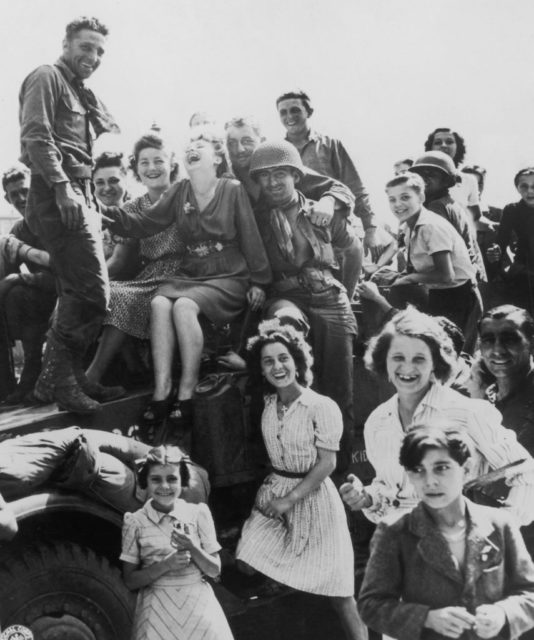
France was liberated after the Allied forces landed in Normandy, after which they pushed into Caen and Paris. Despite orders to destroy the capital, the Germans surrendered.
Between this time and the end of the war, Allied troops worked to push out the last of the German forces from France, while citizens took matters into their own hands regarding those guilty of horizontal collaboration.
Some of the women who’d had romantic relationships with German soldiers were lucky, as they traveled to Germany with their husbands or boyfriends while France was being liberated. Those who couldn’t leave, however, were targeted for their horizontal collaboration. In fact, the anger toward these women was so strong that some were falsely accused of fraternizing with the enemy.
Les femmes tondues
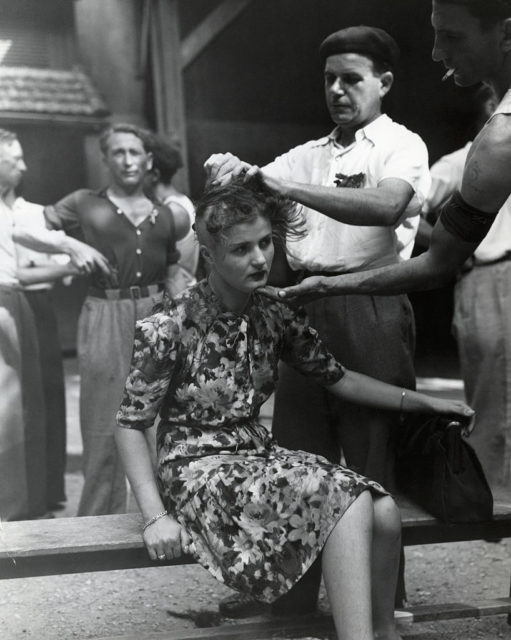
Women had their heads publicly shaved as punishment for their horizontal collaboration, to ensure they were easily identifiable as having been involved with the Germans. Known as “les femmes tondues,” roughly 20,0000 were accused.
Some received a much worse fate than having their heads shaved. They were stripped half-naked, publicly ridiculed, smeared with tar, stoned, kicked, beaten, spat upon and, sometimes, even killed.
Those who shaved the women’s heads were a mix of Resistance members and, ironically, other collaborators. They would actively participate in the persecution of these women as a way to take the heat off of themselves and their activities during the German occupation.
Recognition as German citizens
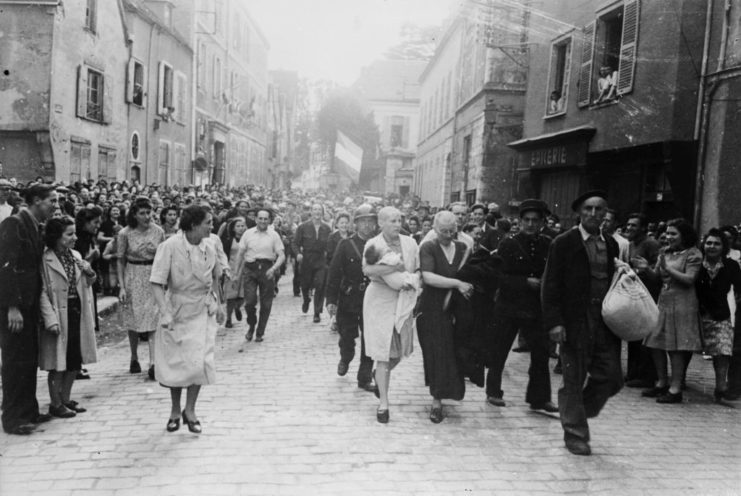
The relations between French women and German soldiers is said to have produced 200,000 offspring. Many of these children were raised not knowing who their fathers were, and those who did often kept it private for fear of being ridiculed. If it was known they were the child of a German soldier, they were subjected to abuse and shunning, even by members of their own family.
Many didn’t find out about their parentage until after their mothers had died and they came across letters and other mementos from the war. These discoveries prompted an increased number of war children who also wanted to reach out and either find their birth fathers or gain German citizenship.
More from us: The World’s First Ever Gliderborne Attack Allowed Germany to Take Belgium
Many of these children have been granted dual French and German citizenship. Germany put forward this offer to atone for its occupation of France during the Second World War and, surprisingly, France has also put it forth as recognition for its poor treatment of these individuals’ mothers.
